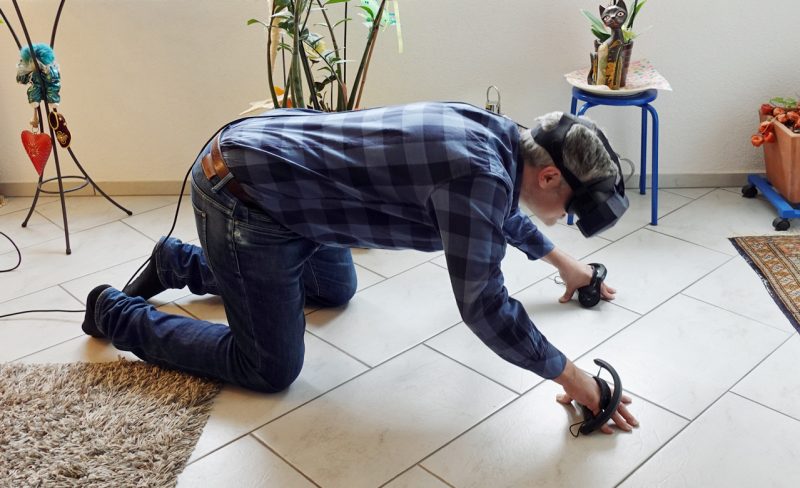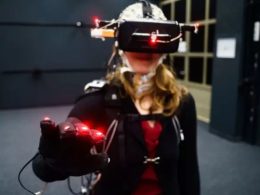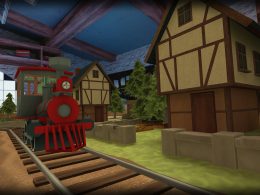Something very unusual originally started as a research project at a Swiss university. It is a cat simulator - yes, that's right. You slip into the perspective of a house cat and have to do various things that house cats do in everyday life, such as throwing things off the table or sitting in cardboard boxes to earn bonus points. We talked to the game designer Janina Woods.
Janina, you studied game design at the ZHDK and have specialised more and more in VR as a game developer since the first Oculus developer glasses (DK1). At that time you also founded a VR/AR studio called "Ateo" and were on board for a few years with an ETH spin-off called "Inspacion", which develops VR tools in the B2B sector. What actually motivated you to develop tools and games for virtual reality at an early stage?
Virtual reality fascinated me from the beginning because it is a completely new medium. It's a bit like being there from the beginning - shooting colourful videos for the first time when colour film was invented. All new territory, nothing explored yet, all super exciting. Of course, the technology is more established now, but still, every year new hardware comes out and new techniques are found. For example, the cat simulator, which gives the player a whole new perspective.
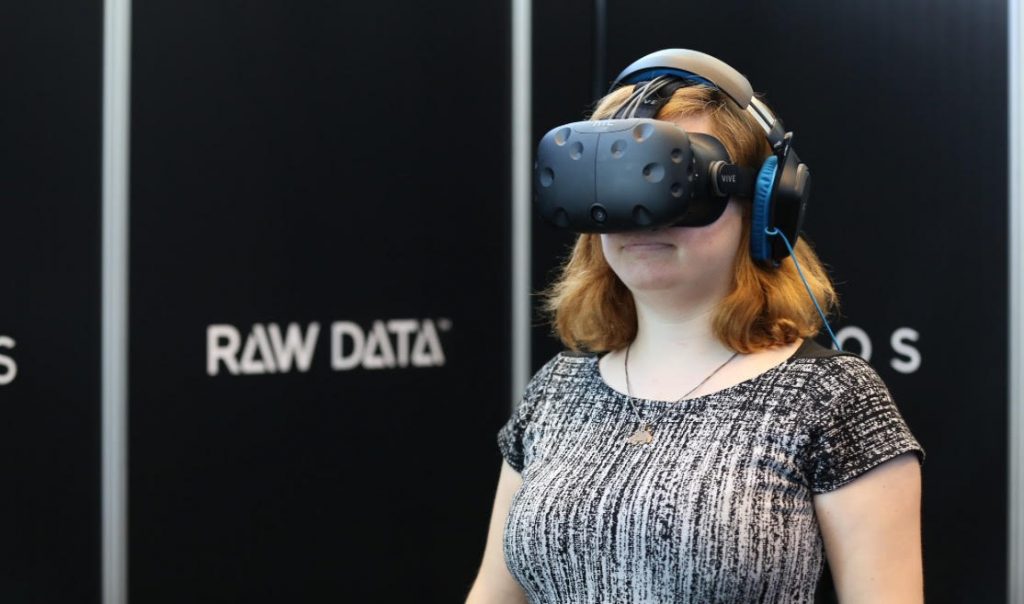
Janina Woods studied at the Zurich University of the Arts and develops apps and interactive content for companies and exhibitors.
I was able to test out a few scenes of the world's first pet simulation "SimbaVR" at the last "Ludicious" quasi under embargo. In the simulation, you really are in the role of a cat. What is special is that you have to walk through the virtual world of a house environment in order to complete certain tasks. And the perspective from the cat's point of view works amazingly well: you know this from applications like the "Ikea VR Experience", where you can take on the perspective as a child, which I find very cool, in order to have an idea of how new furniture affects children. How did you actually come up with a cat simulator?
The whole thing started as an experiment to study the behaviour of lions in a pride. As you have correctly recognised, VR offers us the possibility to slip into completely new roles. In games, for example, you can already walk around as a giant or a small mouse. So why not as a lion? I am very interested in "serious" applications of VR, such as "Serious Games for Rehabilitation": We came up with the cat simulator more by chance than anything else. Since we all work in a home office now, it turned out that the experiment was also super suitable for simulating the house cat at home.
Tell us more about the content of the game and the main tasks of the virtual house cat.
At its core, the cat simulator is still a recreation and exploration of cat behaviour, now simply indoors rather than on the savannah. As a game designer, I couldn't resist adding game elements to the whole thing. These motivate the player to act out the cat's behaviour. The more accurately you behave like a cat, the more points you get. For example, you have to throw objects off a table or hide in a cardboard box. Because you are so small, the box looks like a small house. It's easier to understand why the cat likes to sit in it. Of course, you get bonus points if you also follow hidden cat behaviour patterns. For example, there is no hint to scratch the sofa, but doing it anyway gives a lot of points. But the whole thing can also help your own cat. We want to make it possible to recreate one's own home in the cat simulator. This way, players can perhaps realise that there is little interesting place in the flat for their own cat and thus give the animal more variety with new toys in real life.
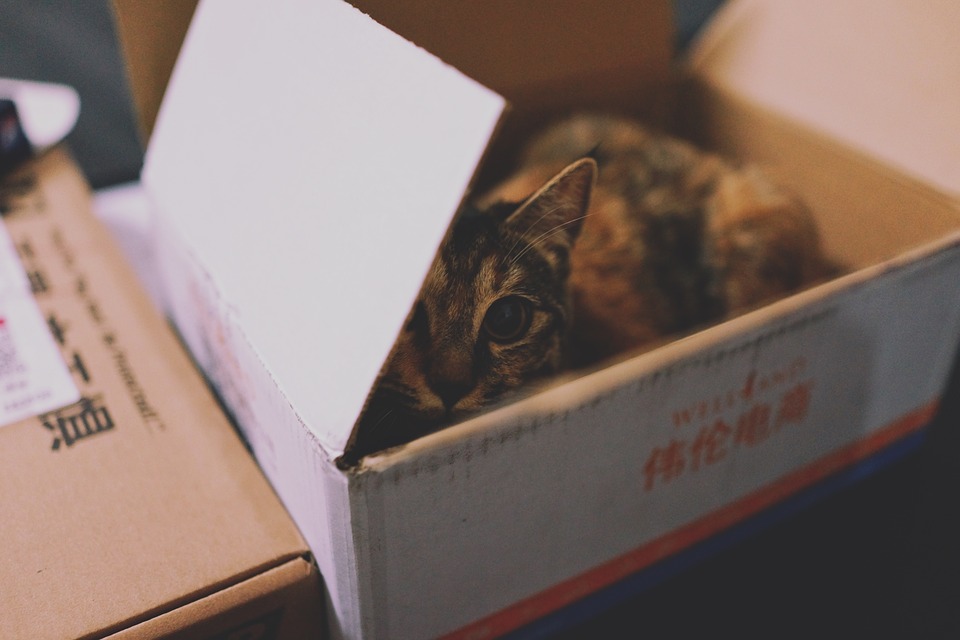
Pixabay
Let's go back to the cat perspective in virtual reality: The perspective from all fours works amazingly well due to the motion detection (gyro and camera sensors) on the headsets, even if the legs are not directly detected by a tracking system on common home systems. Crawling elements have been used surprisingly little in VR games so far. Why did you permanently choose this perspective? It can be a bit exhausting in the long run?
This permanent perspective naturally contributes to the immersion. However, I am currently only testing the game with a blanket on the floor to protect my knees. We will probably recommend wearing knee pads. However, cats also lie around a lot or sit and stare out of the window. That takes some of the strain off the knees.
In the meantime, I have had the opportunity to test "Simba VR" on other VR headsets. Among other things, I tested it on the high-tech VR glasses Pimax 8KX with two 4K displays and a much larger field of view of 200 degrees. I realised that cats have a much wider field of vision: Humans can see about 180 degrees at once with their eyes, but cats can see 200 to 220 degrees without having to move their heads. How do you think you can make this more real so that I, as a human, can see about 20 degrees more?
We are testing different fisheye effects to get as close as possible to this field of vision. However, the comfort of the player is always our first priority. It is more important to us, that you can play the simulator longer and for that we will probably sacrifice a few degrees. In the lion simulator, on the other hand, where it's mainly about research, the field of vision is simulated more accurately. Honestly, when you play it like that for a longer time, your perspective feels really narrow.

The Valve Knuckles enable precise crawling and scratching in the cat simulator "Simba VR".
Are there already plans for cooperations with Swiss VR arenas, in which full body tracking with more sensors on legs and arms will be possible? HTC has just launched a Facial Tracker has been released. With the accessory, users can transfer their facial expressions into VR. This could open up completely new possibilities for cooperative turf wars.
The simulator is very suitable for multiplayer. We have already simulated the lion pride (which looked very funny from the outside), so why not a few cats meeting in the garden? The question here, however, is how multiplayer can look here. Lions cooperate, but domestic cats are more solitary. Since you can't move so fast on your knees, slower, cooperative game objectives would be better ... But the cats, as so often, throw a spanner in the works. Of course, it's very fun to snarl at other players, so we are working on it; but the single player is the focus first.
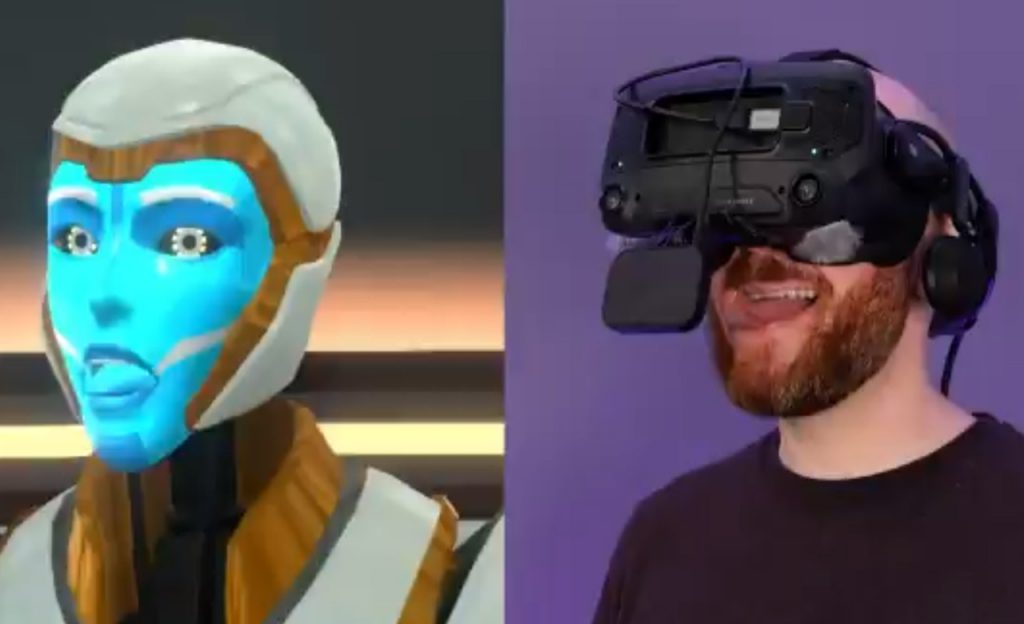
The Facial Tracker for HTC Vive enables 38 facial movements. (Screenshot: Mike VRO/Twitter)
The sensitive cat paws are also responsible for temperature regulation and for sensing vibrations, pain and other stimuli. With the Valve Knuckles the Valve Index I can even perform claw movements, especially since the fingers are tracked on the underside. In the last few days, Sony has already released its VR controller for the PSVR 2. pre-revealed. Have you already received a developer kit of the PSVR 2 and do you see new possibilities?
First we tested the whole thing in the lab with custom controllers, which worked well for the scientific experiments, but of course no longer works for the simulator as a game. Since you walk with the slopes over the ground, smaller controllers with better finger tracking just like the new PSVR 2 controller are of course ideal. This allows actions like scratching to be performed much better. But the haptic feedback when you place your hand/paw on cold aluminium foil, for example, is also very valuable. Only then can you really understand what's going on inside the cat, and that's the goal of the simulation. We always test new controllers like the PSVR 2 and others as quickly as we can.
When will "Simba VR" be released for the Oculus Quest 2 and all current PC VR headsets?
We are still in the middle of development. Above all, the room editor and the design of the gameplay are unfortunately still a long way from being finished. We hope to be able to release the simulator at the beginning of 2022 and are currently aiming for 22 February. (22 February is "Neko no Hi" - Cat Day in Japan).
So it will be quite a while before "Simba VR" is released. Even the colleagues at Games.ch have read our interview. Recorded - thank you very much! To bridge the gap, the Swiss gaming portal for cat fans a whole collection of games in which our popular four-legged friends take on popular leading and supporting roles.





